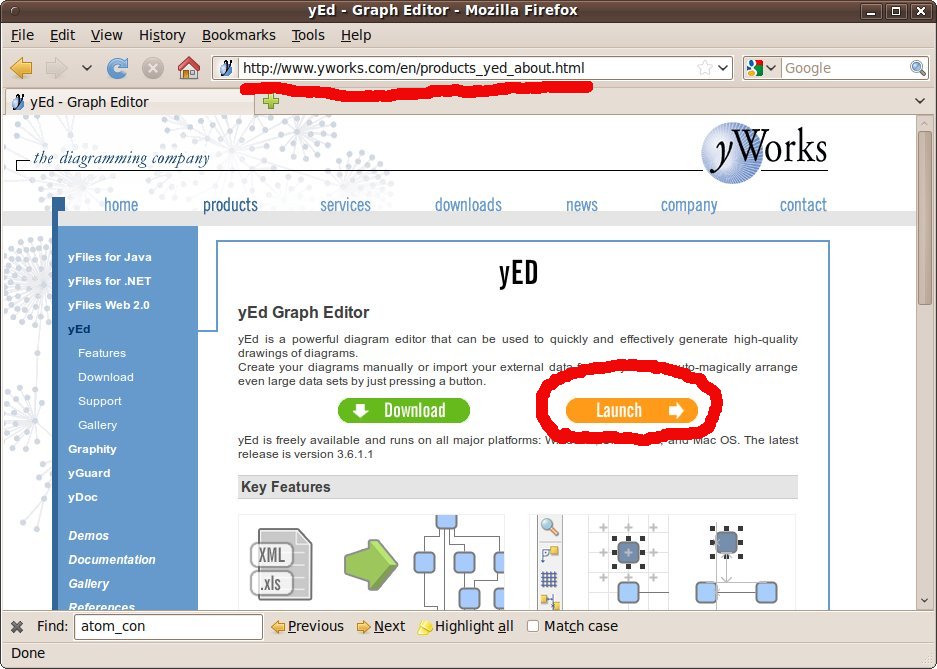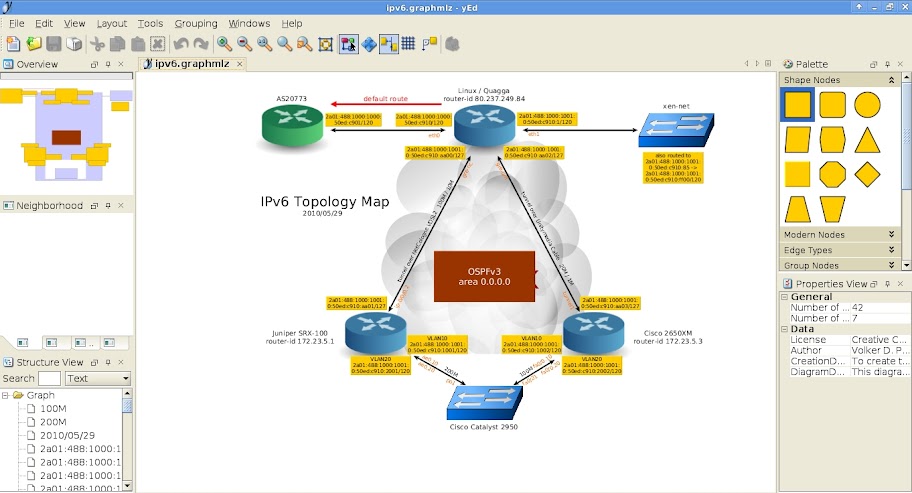
- YED GRAPH EDITOR TUTORIAL INSTALL
- YED GRAPH EDITOR TUTORIAL UPDATE
- YED GRAPH EDITOR TUTORIAL PASSWORD
- YED GRAPH EDITOR TUTORIAL SERIES
- YED GRAPH EDITOR TUTORIAL DOWNLOAD
Drawing a graph is as simple as copy-pasting-dragging nodes.
YED GRAPH EDITOR TUTORIAL PASSWORD
in the docked hierarchical layout panel, select Edge labeling in the Labeling section and set it to HierarchicĮt voila! With this, we have recreated the modeling for the password meter behavior that we have shown in previous sections. Let’s adjust the layout by modifying a setting: Docking a layout is practical if you are going to use it several times. Click that play button to activate the hierarchic layout. This time, instead of clicking Ok, click on Dock - this will set a panel on the left side, with a play button. the label between the strong node and the done node is clicked submit \n / display password submitted screen.  the label between the strong node and the strong node is also typed \n / display strong password screen. the label between the weak node and the strong node is typed \n / display strong password screen. the label between the strong node and the weak node is also typed \n / display weak password screen. the label between the weak node and the weak node is typed \n / display weak password screen. A caret will appear, and you will be able to type a text To insert a label, click on an edge, then press F2. the label between the init node and the weak node is navigated to URL \n / display initial screen. \n represents a new line and can be introduced by clicking Shift-Enter Here, we are going again to copy from the previously-made modeling: ⊕ The labels must follow the event / action format. You will see a rich list of options that allows you to customize the layout, just click ok for now. Select the hierarchical layout ( Layout -> Hierarchical or Alt-Shift-H). We are going to ask yEd to lay it out for us: Your graph at this moment is probably not well laid out. You can move nodes here and there to make space for you to drag the arrow. do the same between the weak and weak nodes (a circle should appear as the origin and target node are the same). do the same between the strong and strong nodes (a circle should appear as the origin and target node are the same). do the same between the strong and done nodes. do the same between the strong and weak nodes. do the same between the weak and strong nodes. do the same between the idle and weak nodes. This should create an arrow between those two nodes click on init node and drag to the idle node and let go.
the label between the strong node and the strong node is also typed \n / display strong password screen. the label between the weak node and the strong node is typed \n / display strong password screen. the label between the strong node and the weak node is also typed \n / display weak password screen. the label between the weak node and the weak node is typed \n / display weak password screen. A caret will appear, and you will be able to type a text To insert a label, click on an edge, then press F2. the label between the init node and the weak node is navigated to URL \n / display initial screen. \n represents a new line and can be introduced by clicking Shift-Enter Here, we are going again to copy from the previously-made modeling: ⊕ The labels must follow the event / action format. You will see a rich list of options that allows you to customize the layout, just click ok for now. Select the hierarchical layout ( Layout -> Hierarchical or Alt-Shift-H). We are going to ask yEd to lay it out for us: Your graph at this moment is probably not well laid out. You can move nodes here and there to make space for you to drag the arrow. do the same between the weak and weak nodes (a circle should appear as the origin and target node are the same). do the same between the strong and strong nodes (a circle should appear as the origin and target node are the same). do the same between the strong and done nodes. do the same between the strong and weak nodes. do the same between the weak and strong nodes. do the same between the idle and weak nodes. This should create an arrow between those two nodes click on init node and drag to the idle node and let go. YED GRAPH EDITOR TUTORIAL UPDATE
update the labels (click on node then press F2) for each of those three nodes to: idle, weak, strong, done. We have our initial pseudo-state! Let’s draw now the nodes: navigate to the password meter tab and paste the init node ( Ctrl-V). 
copy the init node (click on the init node then Ctrl-C).navigate to the previous tab ( aphml) - you can use Ctrl-Tab to navigate the tabs in the editor.save that file as password-meter (the editor will save the file as aphml).For now, let’s reproduce the graph for our password meter: YEd has many interesting options that we will explain later. The template file can be downloaded from GitHub. To make it easy to start drawing a graph representing a Kingly machine behavior, we recommend to open a template file that will contain the four elements that you will need in any graph: you can alternatively try yEd live in the browser, but we recommend downloading the desktop version if you are going to draw more than one state machine.
YED GRAPH EDITOR TUTORIAL DOWNLOAD
Download the desktop graph editor (click on Download now). YED GRAPH EDITOR TUTORIAL INSTALL
Install yEd ⊕įor more detailed information about the graph editor and its usage, please refer to the Tooling section.
YED GRAPH EDITOR TUTORIAL SERIES
yEd is simple to use, offers a series of automatic layouts, allows us to zoom in and out of compound states, and can save the machine graph in an XML textual format that can be versioned on GitHub.

This section aims at showcasing the yEd graph editor which is the preferred tool to create and maintain Kingly state machines. In this section, we are going to reach the same implementation but this time, instead of writing the machine’s transitions manually, we are going to draw them in a graph editor and convert the drawing to a standard JavaScript function. In the previous sections, we specified, designed, and implemented a password meter.







 0 kommentar(er)
0 kommentar(er)
